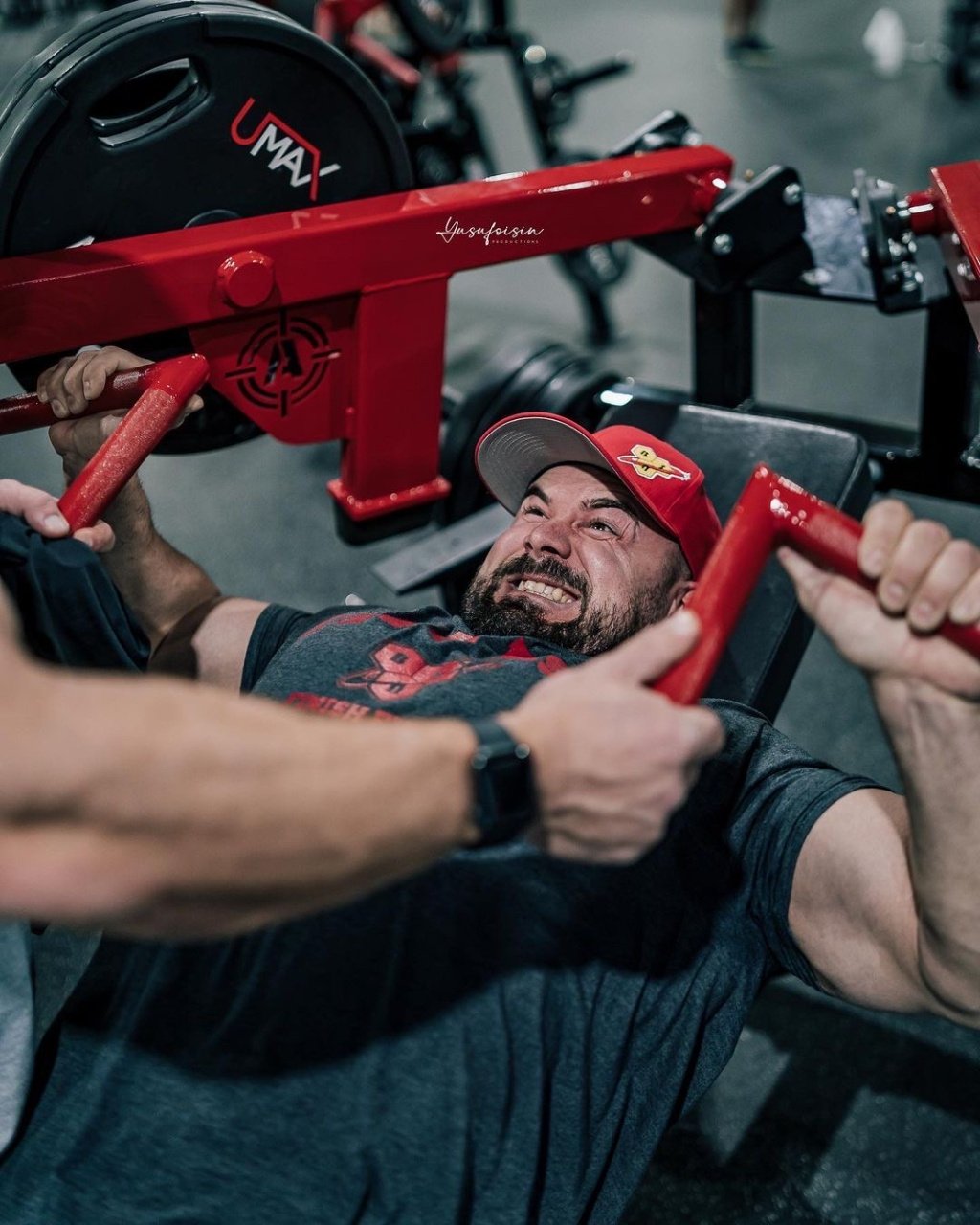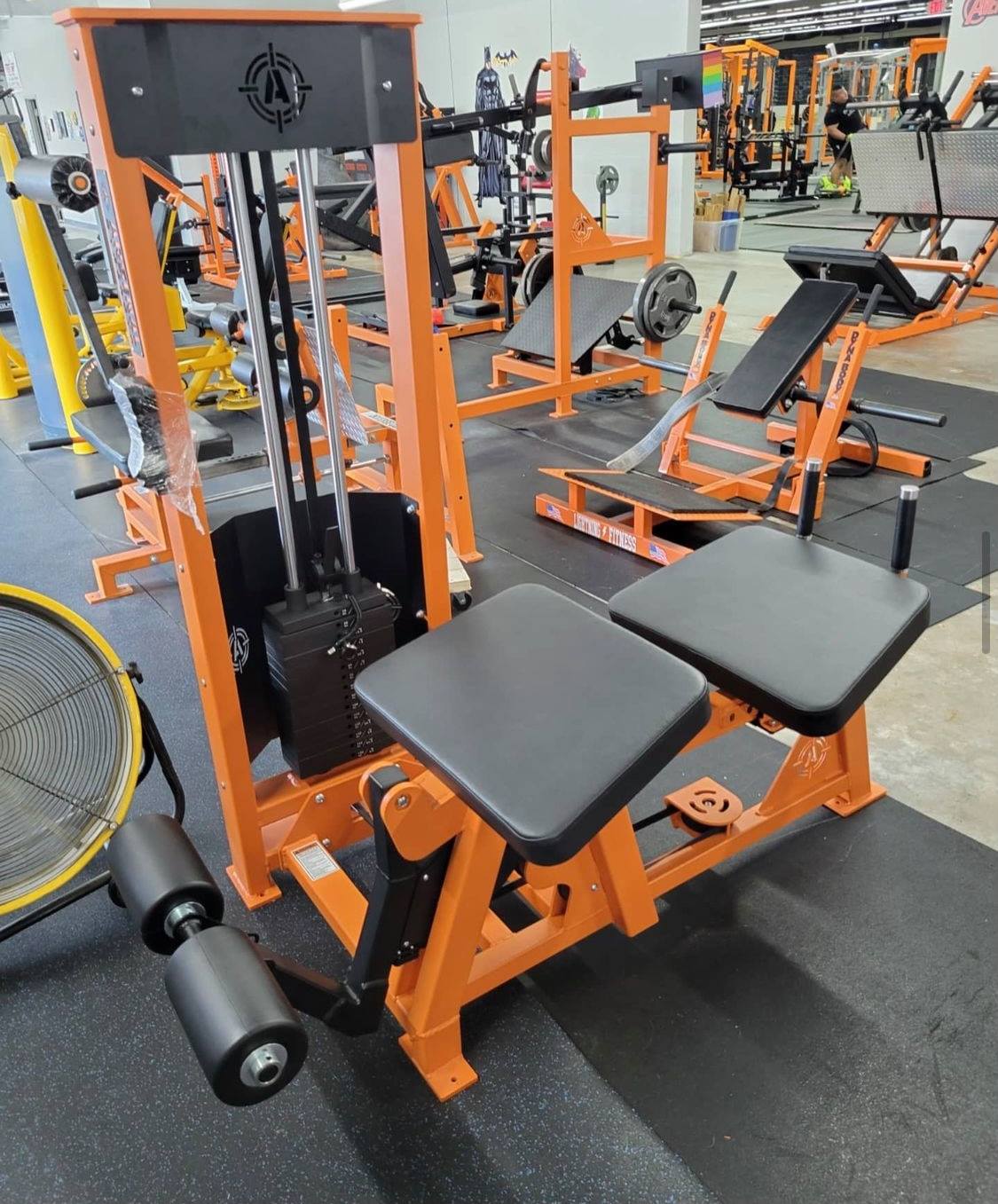Unraveling the Chest Press vs Bench Press. What is the Best Choice?
Let’s dive into the world of fitness, specifically targeting the muscles that give you that chiseled upper body look. We’re talking about the chest muscles, and two popular exercises that target them - the chest press vs bench press. They may sound similar, but they’re distinct in their execution and impact. Curious? Let’s unravel the best choice for your fitness goals!
The chest press and bench press are both effective exercises for targeting the upper body muscles, but differ in execution due to equipment used. Both have advantages and disadvantages that need to be considered when choosing which exercise is best suited for your fitness goals. Incorporating variations of chest press and bench press into a workout routine with proper form can help maximize results while minimizing injury risk.
Understanding Chest Press and Bench Press
At a glance, both the chest press and bench press serve the same primary purpose - to strengthen and define your upper body by focusing on chest development. However, the methods they employ to achieve this goal differ significantly.
The bench press is executed while lying flat on a bench and pushing weights upward above the chest. The chest press, on the other hand, is typically performed in a seated position on a machine, pushing handles out in front of the body. The key difference lies in the use of machines for chest press and free weights for bench press. But what does this mean for you, the fitness enthusiast? Let’s delve deeper.
Chest Press Overview
Chest press, often executed on chest press machines, appeals to both fitness novices and veterans alike. The structure of the machine chest press, including the seated chest press variant, ensures safety and stability surpassing that of free weights. Incorporating a machine press, the chest press zeroes in on the chest, triceps, and anterior deltoids, promoting concentrated muscle growth.
However, it’s not just about safety and ease. The chest press promotes a degree of muscle isolation, allowing individuals to concentrate on engaging the chest, deltoids, and triceps without the need to maintain balance during the exercise. On the other hand, the free weight bench press requires more attention to form and technique, and engages a broader range of secondary muscles, including the forearms, muscles of the rotator cuff, rhomboids, traps, and lats.
Bench Press Overview
As a fundamental feature in any gym, the bench press is a free weight exercise providing a challenge for all fitness levels. The starting position for the bench press is lying flat on a flat bench, gripping the barbell slightly wider than shoulder-width apart, with the barbell above the chest. Focusing mainly on the chest, triceps, and anterior deltoids, it is an optimal choice for those aiming to boost their upper body strength.
There are several variations of the bench press, including the traditional bench press. The most popular is the barbell bench press, a multifaceted exercise known for enhancing upper body strength. Another variant is the dumbbell bench press. Regardless of the type, bench press requires careful attention to form and technique to prevent injuries and maximize results. It is recommended to perform 6-12 repetitions for three sets when executing the fundamental barbell bench press for effective muscle building.
Comparing Muscle Activation in Chest Press vs Bench Press
In terms of muscle activation, both the chest press and bench press engage the pectoral muscles, triceps, and deltoids. However, there are key differences between the two exercises. The bench press, due to its free-weight nature, engages a broader array of muscle groups, including:
- Forearms
- Muscles of the rotator cuff
- Rhomboids
- Traps
- Lats
- Lower body
This widespread muscle engagement makes the bench press a more demanding exercise.
In contrast, the chest press, with its machine-guided movement, primarily targets the chest muscles. While this may seem limiting, it allows for a more focused workout. And don’t be mistaken, the chest press isn’t inferior to the bench press. The American Council on Exercise recognizes the barbell bench press as an effective exercise for activating chest muscles. It is widely acknowledged for its ability to target this muscle group.
Advantages and Disadvantages of Chest Press
Like any other exercise, the chest press comes with both advantages and drawbacks. On one hand, it offers enhanced safety, ease of learning, and improved muscle isolation. On the other hand, it has limitations in terms of range of motion and reduced engagement of stabilizer muscles.
We’ll explore these aspects further.
Pros of Chest Press
For good reasons, the chest press is favored by beginners and those on the road to recovery from injuries. The risk of injury is minimized by the controlled movement provided by the chest press machine, rendering it safer compared to free weight exercises such as the bench press. This doesn’t mean that it’s only suitable for beginners. Even seasoned gym-goers incorporate chest press into their workouts to target specific muscle groups and achieve symmetrical muscle development.
The chest press has several advantages:
- It is easy to learn, making it suitable for beginners in strength training.
- The chest press machine helps individuals master the movement correctly, enabling them to lift more weight with ease.
- It promotes muscle isolation, offering potential benefits for focused muscle development.
Cons of Chest Press
Despite its advantages, the chest press also has certain limitations. The most significant one is the limited range of motion due to the fixed path of the weight. This restricted movement may not allow for complete muscle contraction, potentially impacting overall muscle development. However, this can be overcome by incorporating other exercises into your workout routine that allow for a wider range of motion. Some alternative exercises to consider are:
- Dumbbell bench press
- Push-ups
- Cable flyes
- Incline bench press
By incorporating these chest exercises, you can ensure that you are targeting your chest muscles from different angles and achieving a more complete muscle contraction.
Another drawback is the reduced engagement of stabilizer muscles. The chest press machine regulates and confines the movement of the arms, reducing the need for balance and engagement of stabilizing muscles. This could potentially lead to an imbalance in muscle development. It’s therefore essential to supplement chest press with other exercises that engage the stabilizer muscles.
Advantages and Disadvantages of Bench Press
As a free weight exercise, the bench press presents a unique set of pros and cons. Its full-body compound movement and muscle mass development benefits are balanced by an increased risk of injury and the need for a spotter.
Let’s delve deeper into these aspects.
Pros of Bench Press
As a full-body compound movement, the bench press simultaneously works on multiple muscle groups, thereby fostering overall muscle coordination and development. This contributes to the overall development of muscle mass and strength, particularly in the upper body. Moreover, the bench press enables the use of maximum weight, limited only by one’s own strength, offering greater potential for strength gains compared to the chest press machine, which provides a fixed resistance.
The bench press has established a strong reputation within the lifting community. Its efficacy in enhancing strength and muscle mass has made it a staple in most workout routines. Whether you’re a beginner or a seasoned gym-goer, the bench press offers a challenge that aids in muscle growth.
Cons of Bench Press
Despite its numerous benefits, the bench press also has certain drawbacks. The most significant one being the increased risk of injury due to improper execution. Ensuring proper form and technique is crucial to avoid muscle strains, joint pain, and other serious injuries.
Another disadvantage of the bench press is the necessity for a spotter, especially when lifting heavy weights. Having a spotter ensures safety by providing assistance in lifting the bar off the chest if it becomes too heavy. A spotter can also enhance performance by providing assistance during the set, reducing the risk of potential injuries.
Determining the Right Exercise for Your Goals
Your personal fitness goals and preferences will largely dictate whether you choose the chest press or the bench press. If you’re a beginner or recovering from an injury, the chest press is a safer and more approachable option. The chest press machine offers essential support and stability, making it a suitable starting point. As you advance and enhance your strength, you can transition to the bench press, which can contribute to greater muscle development and increased strength over time.
If your primary objective is to prioritize strength building, the bench press might be a more suitable option. It enables the use of maximum weight, limited only by your own strength, thereby offering a greater potential for strength gains compared to the chest press machine, which provides fixed resistance. However, if muscle hypertrophy is your goal, both exercises can contribute to muscle growth. Ultimately, it is crucial to focus on volume and use challenging weights for hypertrophy, regardless of the chosen exercise.
Incorporating Both Chest Press and Bench Press in Your Workout Routine
Why limit yourself to one exercise when you can reap the benefits of both? Integrating both chest press and bench press into your workout regimen can alleviate boredom and minimize the risk of injury. Alternating between these two exercises can provide a comprehensive chest workout, targeting different muscle groups and enhancing overall upper body strength and development.
A suggested workout routine encompassing both chest press and bench press might include the following exercises:
- Barbell Bench Press
- Dumbbell Chest Press
- Incline Bench Press
- Chest Flyes
It is important to begin with a thorough warm-up and to execute the exercises with proper form and technique. Remember, it’s not about the number of exercises you do, but about doing them correctly and consistently.
Proper Form and Technique for Chest Press and Bench Press
Correct form and technique greatly influence the efficacy of any exercise. When executing a bench press, it is recommended to:
- Lie flat on a sturdy bench
- Grip the barbell slightly wider than shoulder-width apart
- Puff out the chest
- Maintain a slight arch in the back
- Bring the shoulder blades together and down
- Keep the feet firmly planted on the floor throughout the movement.
Similarly, when performing a chest press exercise, it is important to:
- Grip the handles with a full grasp
- Maintain a neutral wrist position
- Keep your elbows close to your sides as you lower the weight
- Press the handles or bar back up powerfully, focusing on effectively utilizing your chest muscles
A common mistake to avoid in both exercises is using excessive weight that compromises your form.
Alternatives and Variations for Chest Press and Bench Press
Beyond the conventional chest press and bench press, numerous variations target diverse muscle groups and pose unique challenges. For example, the incline dumbbell chest press focuses on the upper pectorals and clavicular region, while the decline dumbbell chest press emphasizes the lower pecs. These variations can add diversity to your workout routine and target different aspects of your chest muscles.
Similarly, when performing the bench press, you can adjust the angle of the bench to target different parts of your chest. The incline bench press targets the upper part of the chest muscles, while the decline bench press targets the lower portion of the pectoral muscles. These variations provide a well-rounded workout for your chest muscles and can be incorporated into your workout routine based on your specific goals and preferences.
In conclusion, both chest press and bench press are effective exercises for building upper body strength and muscle mass. They target similar muscle groups but offer different benefits and challenges. The chest press, typically performed on a machine, provides a safer and more controlled exercise experience, making it a suitable choice for beginners and those recovering from injuries.
On the other hand, the bench press, being a free weight exercise, offers a more challenging workout, engaging a broader array of muscle groups and offering greater potential for strength gains. Ultimately, the choice between these two exercises should be based on your personal fitness goals, experience, and preferences. Remember, consistency is key in achieving your fitness goals and maintaining a healthy lifestyle.
Frequently Asked Questions
Is A chest press as good as a bench press?
Although the chest press can help build muscle, it is not as effective as the bench press for building strength and improving stability and balance.
Does chest press convert to bench press?
There is no conversion from chest press to bench press, so it's best to start out at about 50% of your chest press weight limit and progress from there.
Is chest fly better than bench press?
The bench press is a better overall choice than chest flys for targeting the pecs, though the fly does stimulate the biceps more.
What are the primary muscle groups targeted by the chest press and bench press?
The chest press and bench press exercises target the pectoral muscles, triceps, and deltoids as their primary muscle groups.
What is the recommended exercise for beginners, chest press or bench press?
For beginners, the chest press is the recommended exercise due to its machine-guided movement that ensures proper form.
Additional Resources:
Bilateral Leg Press: https://www.youtube.com/watch?v=0FOAfwG8lCI
Pendulum Squat Machine: https://www.youtube.com/watch?v=jnWgrCYSVLM
Belt Squat Machine: https://www.youtube.com/watch?v=7l1kU5j6Shk






